Your basket is currently empty!
Author: Matt Dixon
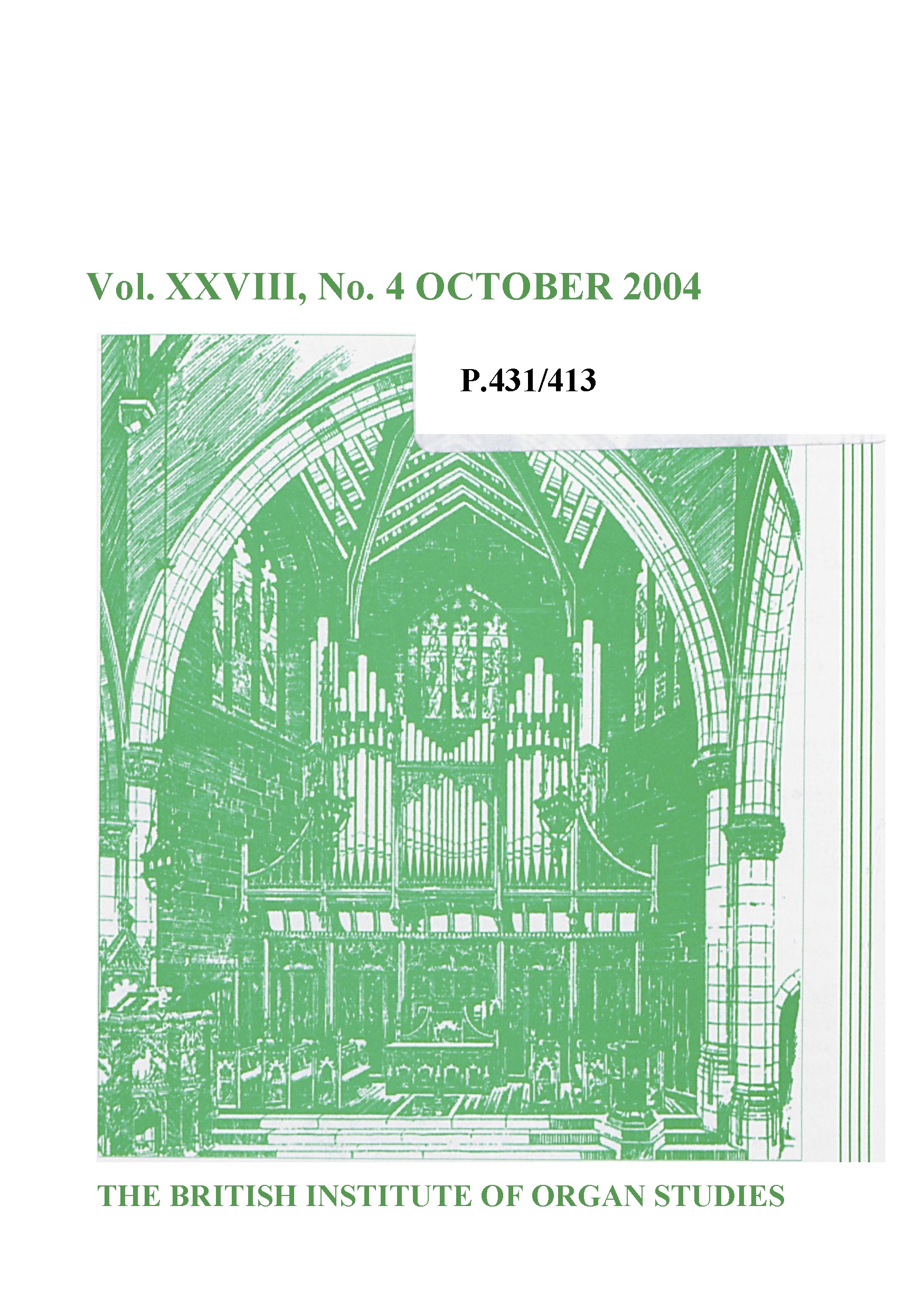
BIOS Reporter – Volume 28, No.4 – October 2004
…The Bermondsey organ will do much to clarify this debate. It has been subjected to a rigorous restoration; an internal inspection of the organ reveals immediately the difference between original and replacement material, the latter the subject of detailed study of the organ before restoration. The result is a coherent, working organ on which services…
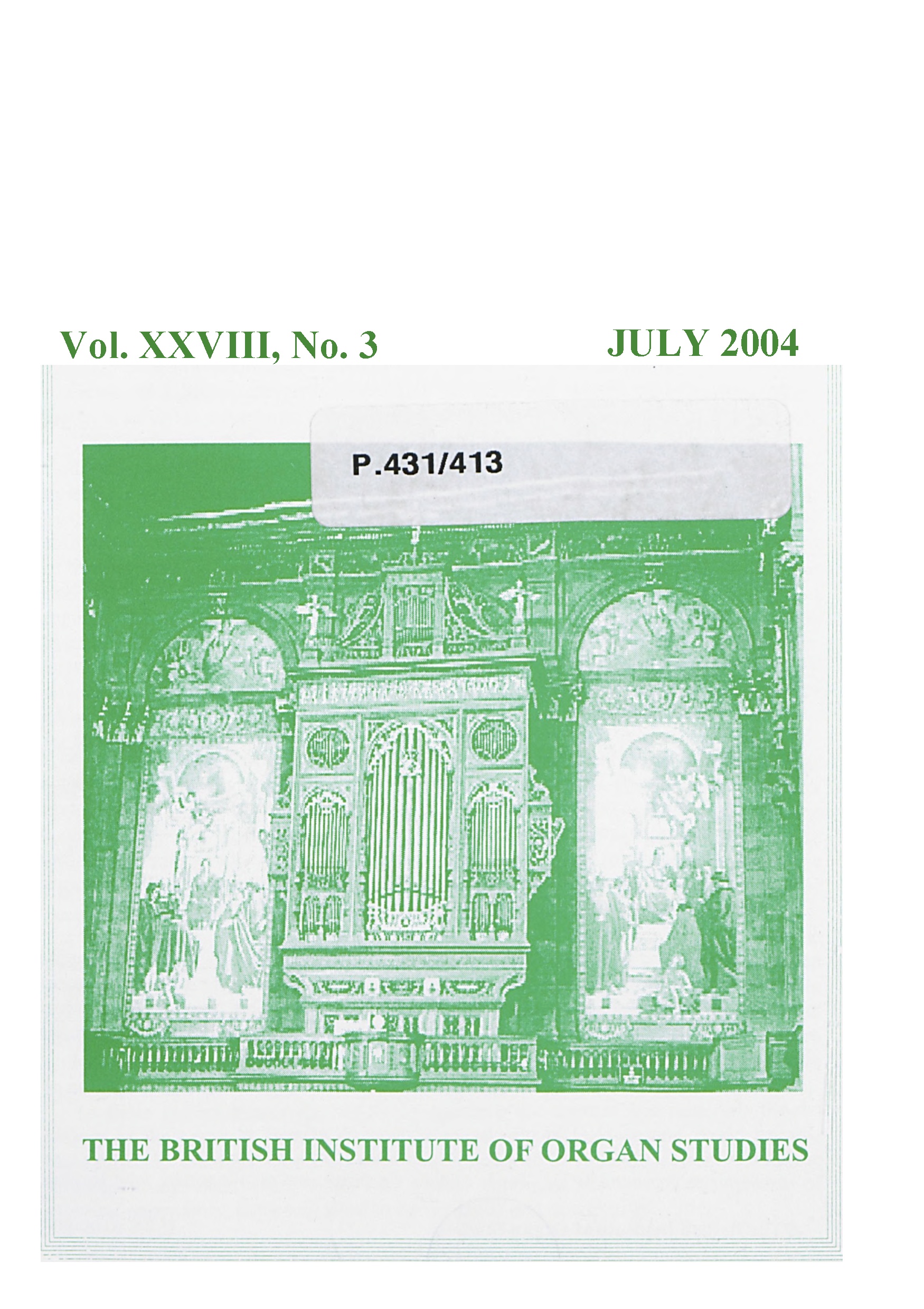
BIOS Reporter – Volume 28, No.3 – July 2004
Ailred’s complaint from the twelfth century resonates in unexpected ways in the early years of the twenty-first century. We no longer have to endure ‘the noise of the cymbals’ (the irreverent might suspect that Ailred may have possessed prescience of some neo-baroque organs); ‘the sound of the bellows’ rarely troubles the modem organist, although the…
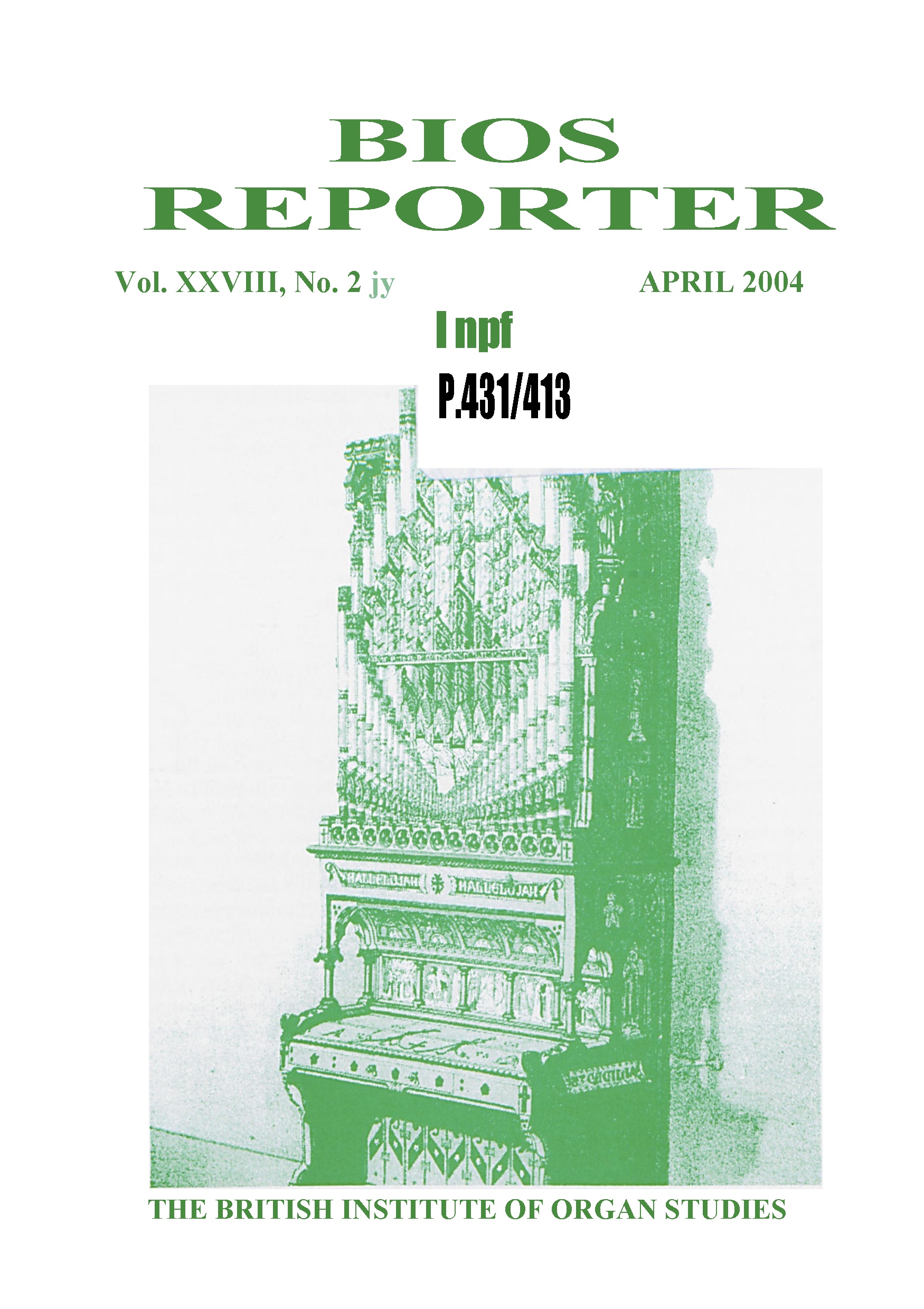
BIOS Reporter – Volume 28, No.2 – April 2004
The work to be undertaken at the Royal Festival Hall (described on pp. 8-13) brings back memories of the flush of enthusiasm which surrounded the Downes organ and organ-building in general during the 1950s and 60s…
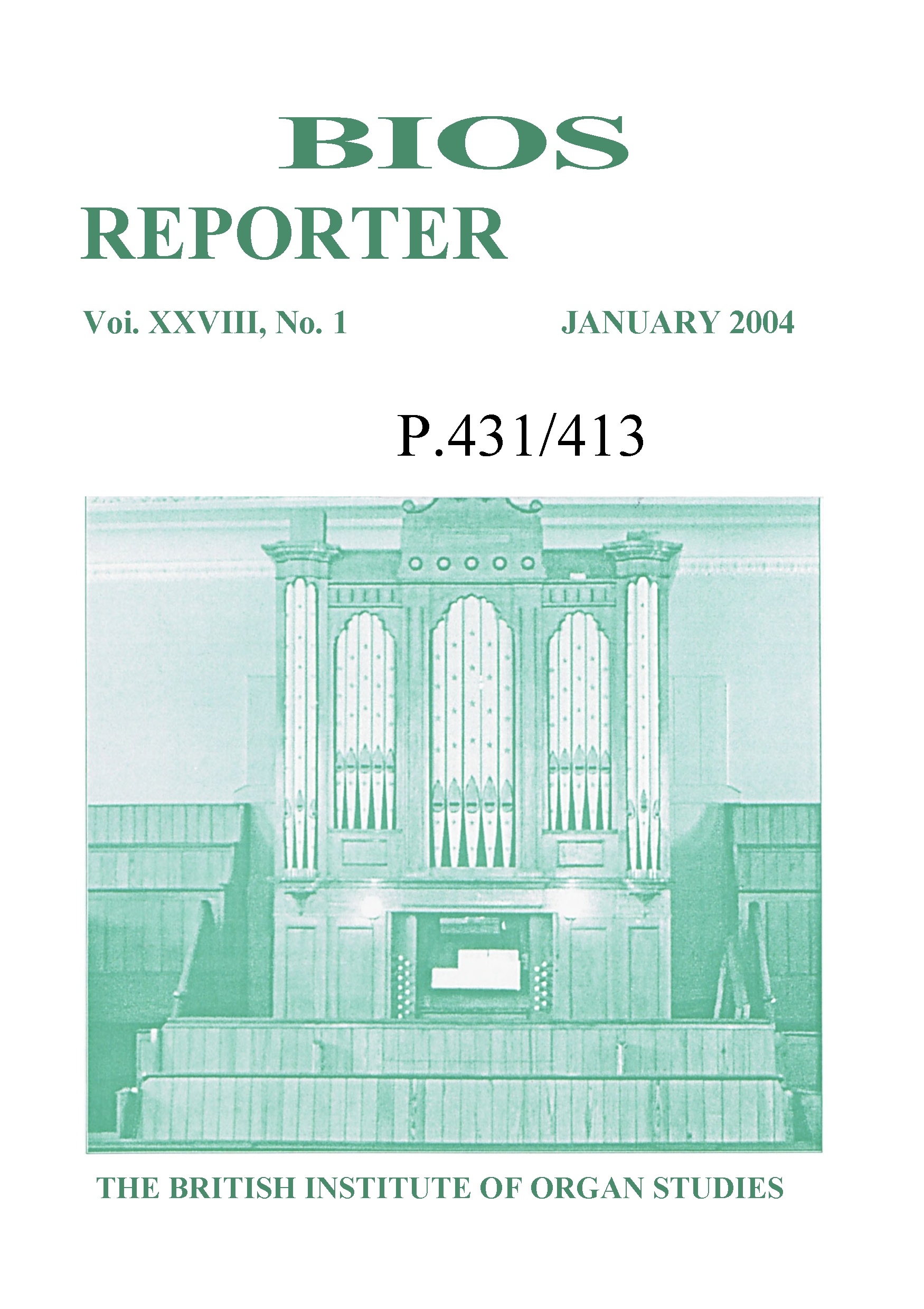
BIOS Reporter – Volume 28, No.1 – January 2004
It is generally assumed that the basso continuo simply disappeared by c. 1790 but its demise was part of a complex process. The Classical period (the preserve of mature Mozart and Haydn, Beethoven and Schubert) embraced the French Revolution; this had many consequences, including the imposition, on the continent, of the metric system, and the…
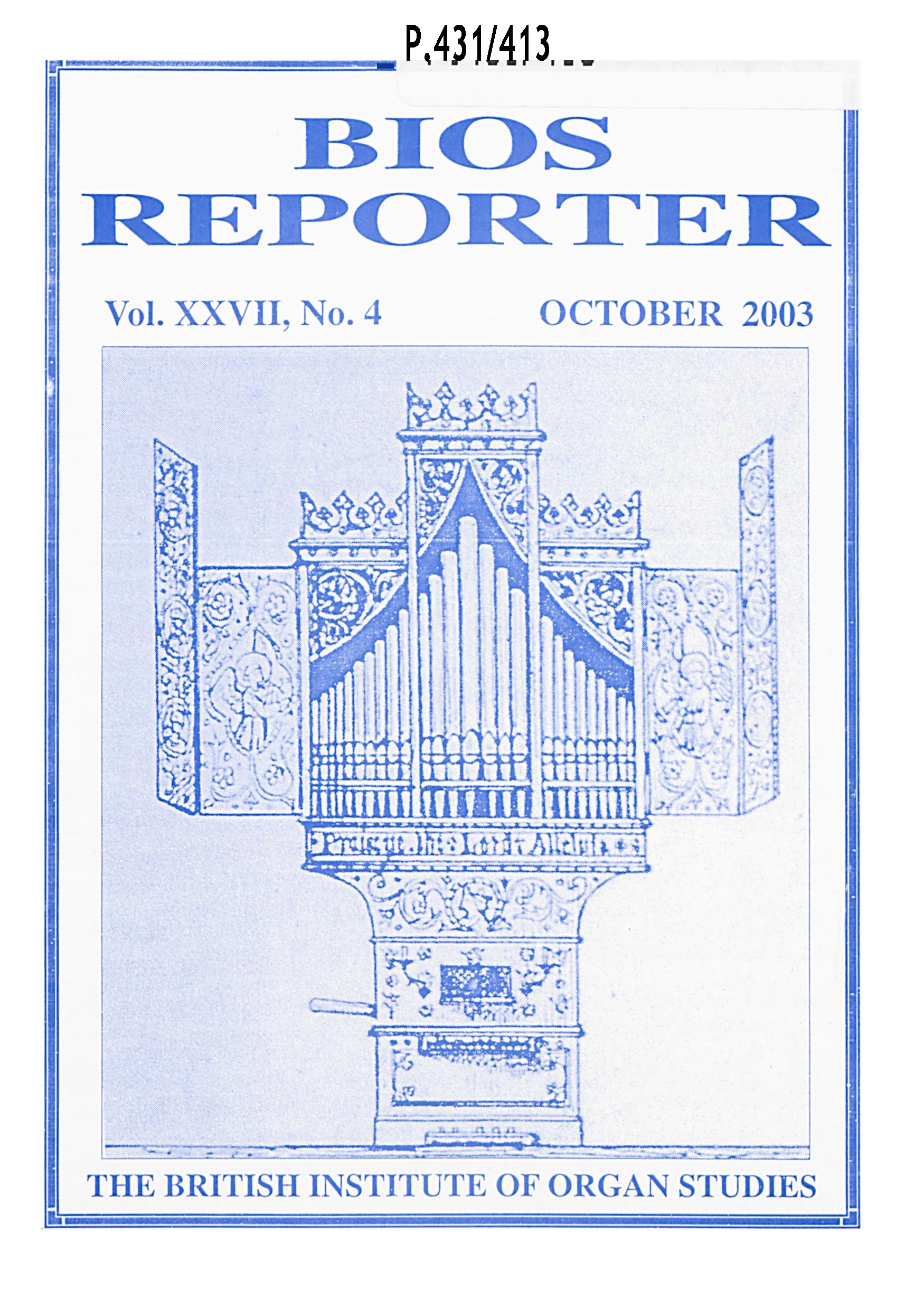
BIOS Reporter – Volume 27, No.4 – October 2003
The performance on the organ of contrapuntal music from the late-Baroquc period has received much attention, scholarly and otherwise, including the enthusiastic assumptions characteristic of the mid-twentieth century. There is a consensus that registrations should permit the counterpoint to be heard clearly and tempi should allow the details of the music to be heard…
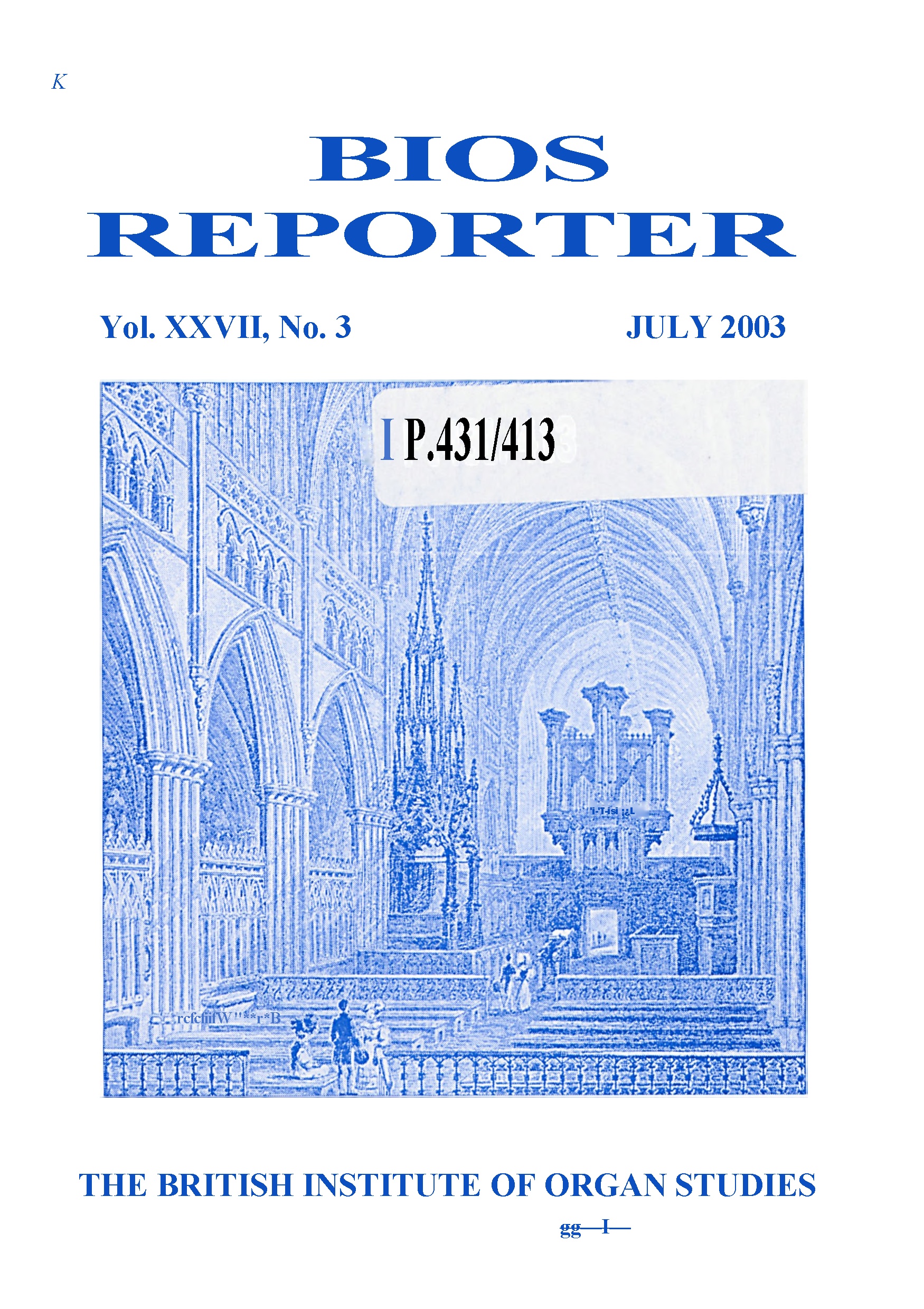
BIOS Reporter – Volume 27, No.3 – July 2003
It seems that in many primary schools children arc not being given a musical education. Whether one approves or not of the way in which education is organized, it has to be recognized that the insatiable thirst of government for statistics relating to the performance of pupils has led to a concentration on those areas…
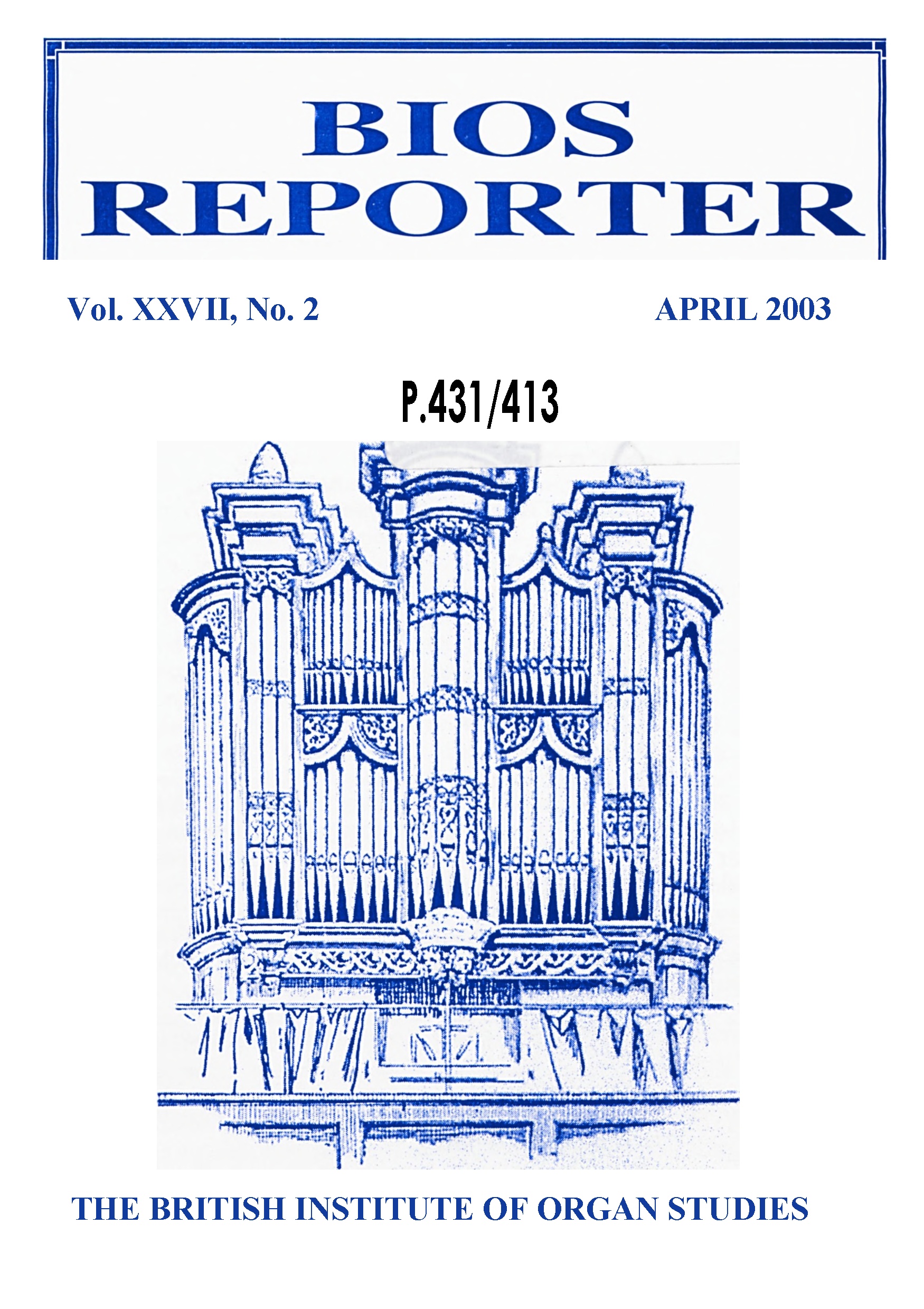
BIOS Reporter – Volume 27, No.2 – April 2003
The foundation of the Pipe Organ Society of Ireland (POSI) is more than just welcome news of the birth of a sister organization to BIOS. BIOS maintains links with a number of other organisations around the world having similar aspirations, but, in the case of POSI, there arc special reasons to welcome its inception…
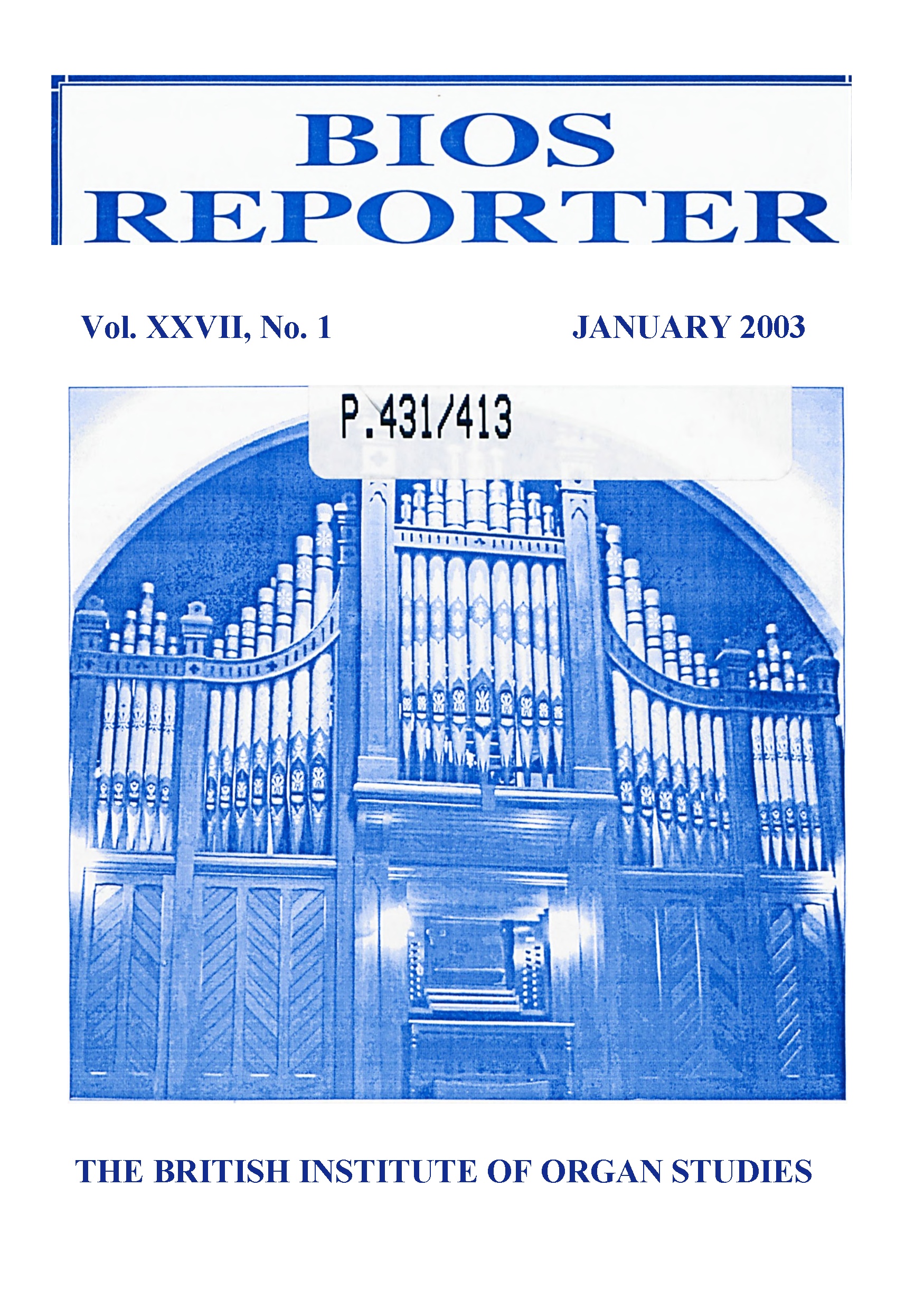
BIOS Reporter – Volume 27, No.1 – January 2003
We are familiar with the two traditional roles of the organ, one as a liturgical instrument, the other for concert use. The pair seems to be as old as the organ (if one can include the sounds made in the gladiatorial ring in association with various savage and bloody practices). Nobody can doubt the contribution…
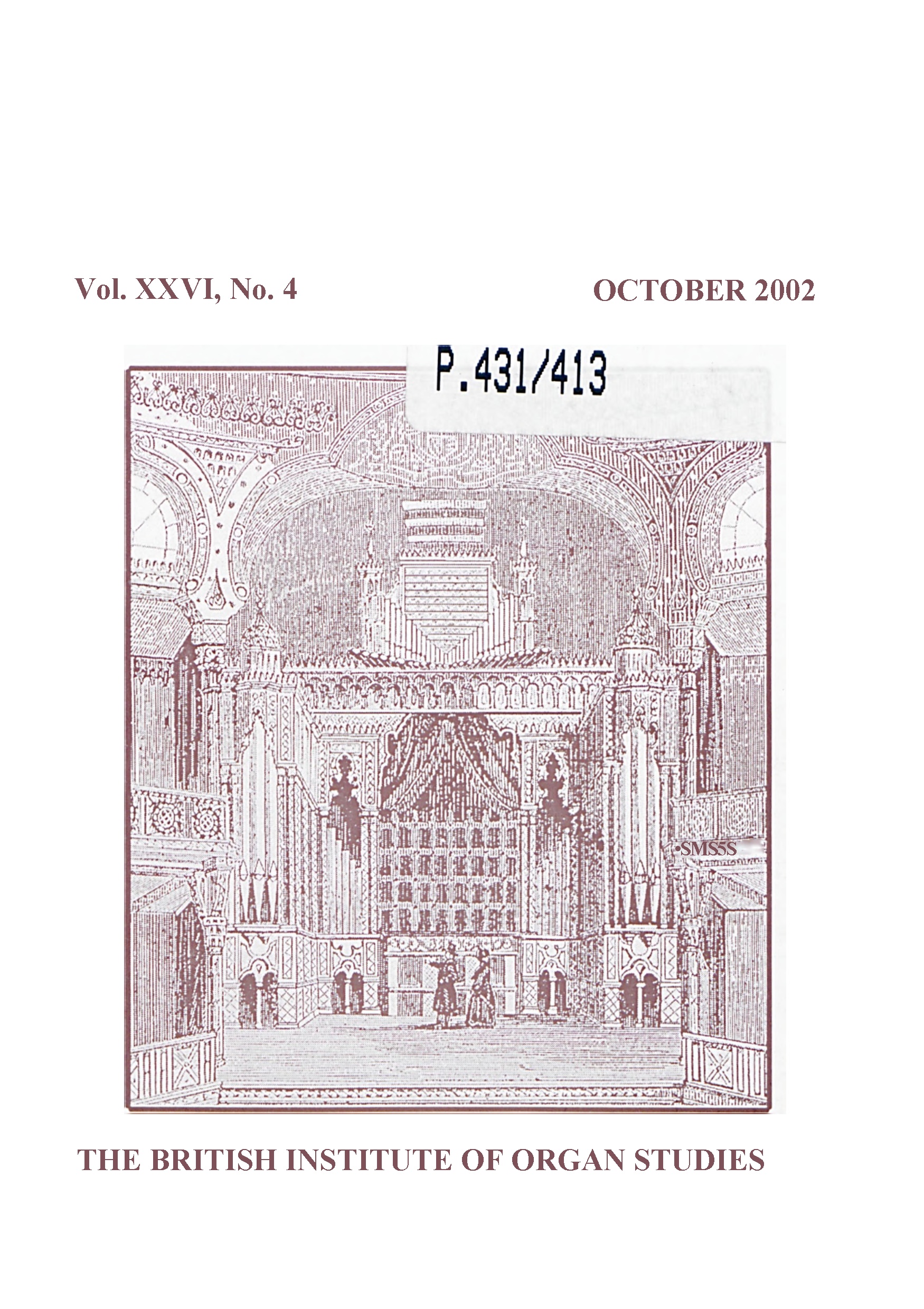
BIOS Reporter – Volume 26, No.4 – October 2002
There are grounds for believing that vvc arc making good progress in the preservation and restoration of historic organs in Britain. There is much literature giving guidance on not only what ought to be done but also that which ought not to be done. The 1999 Liverpool Conference explored the topic exhaustively, while the overhaul…
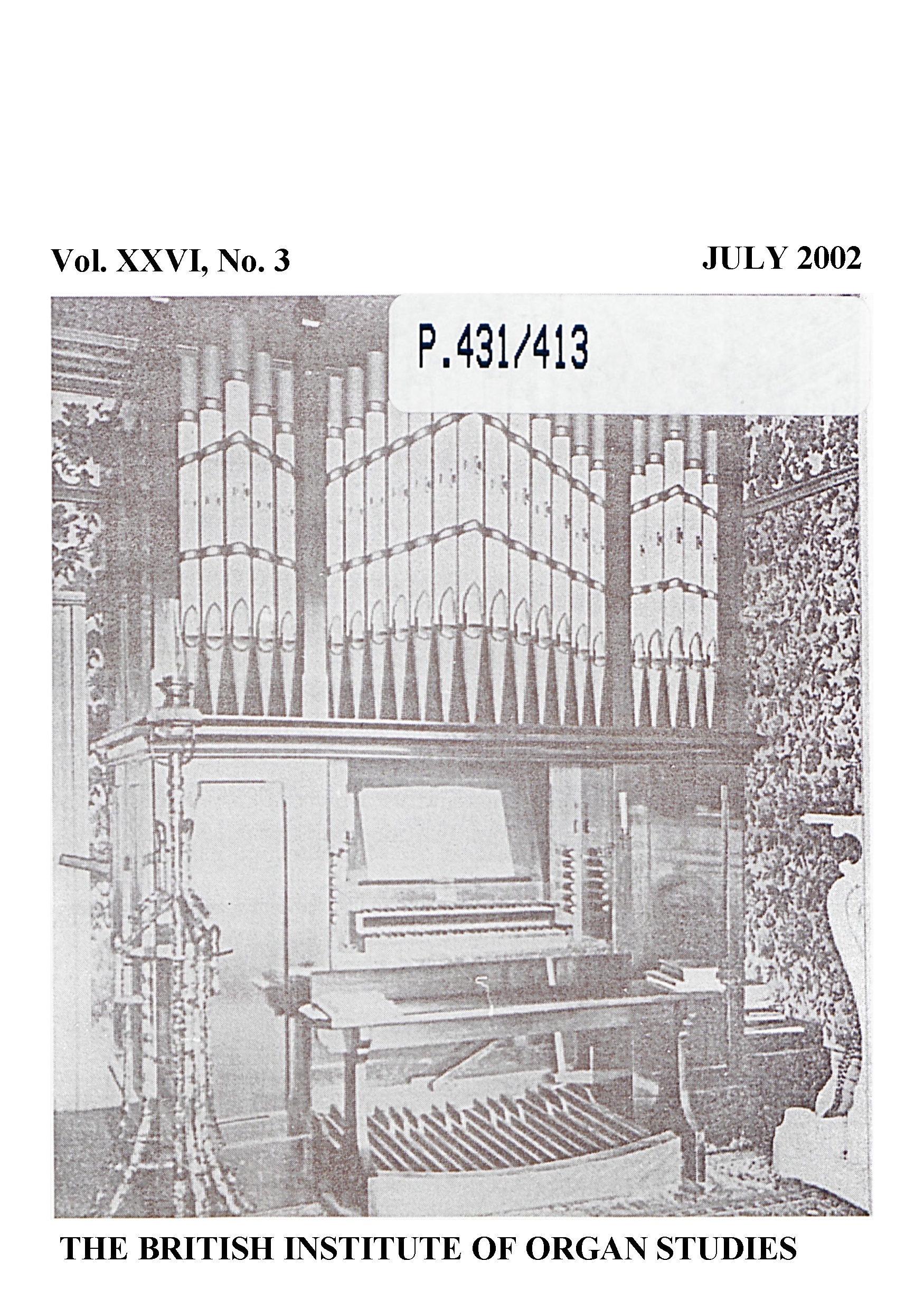
BIOS Reporter – Volume 26, No.3 – July 2002
The quest for authentic performances of Baroque music has led to mixed results, particularly in respect of the organ. There is a realisation that there is no such thing as the authentic Baroque organ, but rather a variety of instruments which fits that description, none of which resembles the extreme organs of the 1970s. One…